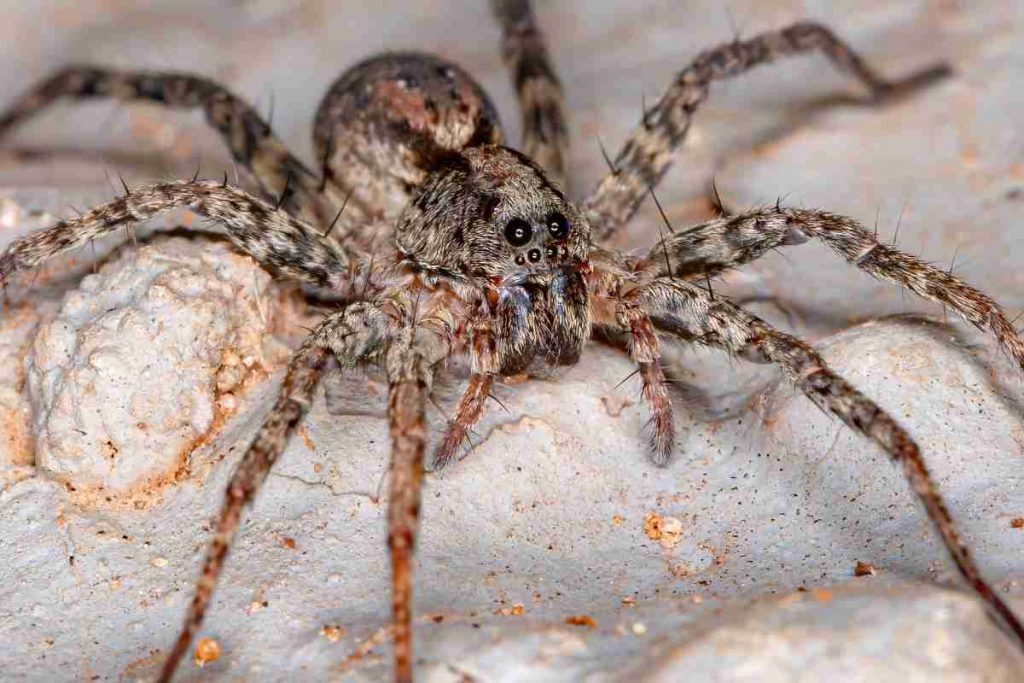In our recent articles, we have learned about different species in detail. Today, we will lessen the curiosity about How big is a wolf spider? Wolf spiders are not shy about hunting in the open and will often be seen running across floors in search of food.
In fact, the largest species of wolf spider is the (Carolina Wolf Spider) which typically measures 22–35 mm with their legs bring over an inch long.
How Big Is A Wolf Spider When They Hatch?
The female wolf spider can lay more than 100 egg sacks in its lifetime and these eggs are covered in web silk which will then be carried on their spinnerets.
When the eggs hatch the size of these baby wolf spiders is very small no more than 1 to 2mm.
The spiderlings will then attach themselves to the female’s body and legs this is mainly for protection. There they will remain until the babies are large enough to feed themselves.
Does Each Species Of Wolf Spider Vary In Size?
There are over 240 groups of wolf spiders, and the size of each species varies, from 10 to 35 mm with some being larger than others.
For example, the European wolf spider is the 2nd largest species, with their body size measuring between 22-30 mm. Meanwhile, the Australian wolf spider is the 3rd largest species and ranges from 15 mm to 27 mm in body length.
| 1. Carolina Wolf Spider | Body size between 22–35 mm with legs over 1 inch long |
| 2. European Wolf Spider | Body size can range from 15 to 30 mm in length |
| 3. Australian Wolf Spider | Body size is around 15 to 27mm with their legs measuring 3-5mm |
Are Females Wolf Spiders Bigger Than Males?
Male wolf spiders are typically smaller than females of the same species. In fact, in some cases, males can be up to 50% smaller! So why is this? Well, the females are bigger because they need to be able to produce and protect their egg sacs.
A female’s body is specifically designed to do this; they have larger abdomens and an extra set of legs that they use to carry their egg sacs around.
This means that they need more nutrients, which they get by eating more food. Males, on the other hand, do not need to worry about producing and protecting offspring, so they don’t need to consume as many nutrients.
Does Size Matter In The Wild?
While talking about how big is a wolf spider, we should also consider their food to live. Size does give females some advantages, for starters, they can produce more offspring and catch larger prey, but, it also comes with some disadvantages. For one thing, larger spiders are more likely to be eaten by predators.
Additionally, because they need to eat more food, females often have a hard time finding enough to eat, particularly during lean times when prey is scarce. This puts them at a higher risk of starvation.
Related Article:

Factors That Can Influence The Wolf Spiders Size
Wolf spiders are a type of spider that is found all over the world, and although they vary in size, there are some factors that can influence how big a wolf spider grows. Here is some example of what can influence their growth.
Habitat
One of the most important is habitat. Wolf spiders that live in open habitats, such as fields or prairies, tend to be larger than those that live in forested areas.
This is because open habitats provide more opportunities for spiders to find food and build webs.
In contrast, forested habitats tend to be more crowded with vegetation, which can make it difficult for spiders to find prey and build webs. As a result, Forest-dwelling wolf spiders have to be smaller in order to survive.
Temperature
Temperature can also play a role in how big wolf spiders grow. In general, warmer temperatures result in larger spiders, while cooler temperatures produce smaller spiders.
This is because warmth speeds up a spider’s metabolism, which allows them to grow and mature faster. Conversely, cold slows down a spider’s metabolism, which can stunt its growth.
Nutrition
Another factor that can influence wolf spider size is nutrition. Spiders that have access to more food will grow larger than those that don’t have as much to eat.
This is why you’re likely to see larger wolf spiders in agricultural areas where there are plenty of insects for them to eat.
Conclusion
So, we hope you have found your answer to how Big Is A Wolf Spider? As before there are many species of these wolf spiders of different sizes.
Their size can vary depending on their species and region, some may be bigger than others and are generally harmless to humans.
But, with that said, If you live near a wolf spider habitat it is best to avoid these spiders as they can give you a nasty bite.
Related Article:



